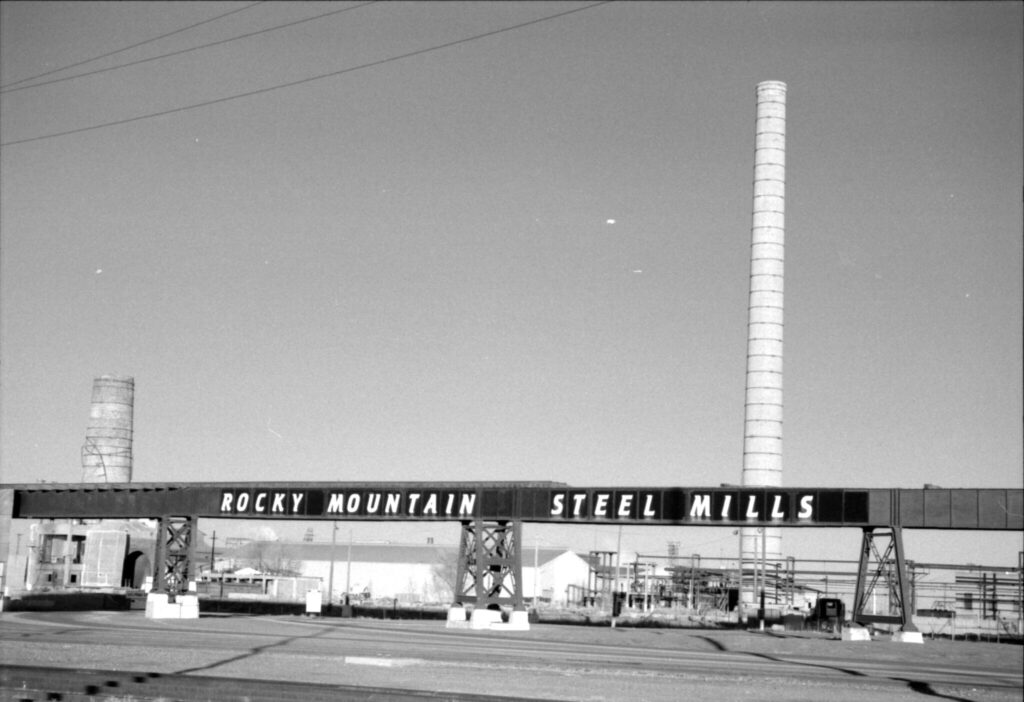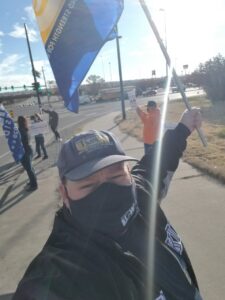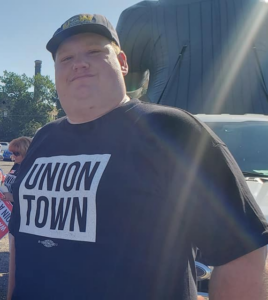
Surging steel imports battered the Evraz Pueblo steel mill for years. Now business is booming, and Evraz Pueblo is set to become the first solar-powered steel mill in America.
Originally founded in 1881, the Evraz Pueblo steel mill in Colorado helped build the American west. A key player in the Colorado Fuel and Iron Company, the mill was the first and only western U.S. supplier of steel rail during the early 20th Century. It played a significant role in connecting America’s western cities, laying track for both passenger and freight transportation.
But by March 2018, the historic mill in Pueblo was in trouble.
The mill had lost approximately 70% of its steel rail manufacturing business from one of its largest customers, the Union Pacific Railroad. Beginning in 2015, Union Pacific began importing the bulk of its steel rail from Nippon Steel & Sumitomo Metal Corp. in Japan.
Nippon was able to provide Union Pacific with 480-foot-long sections of rail, while longtime supplier Evraz Pueblo was limited to producing rail sections that were only 80-feet-long. Nippon even designed and built one of the world’s largest shipping barges, the Pacific Spike, to transport the 480-foot-long sections of rail across the Pacific Ocean to Union Pacific’s facility at the Port of Stockton in California.
But this wasn’t as simple as Nippon making something Evraz Pueblo didn’t. The Colorado facility had long been battered by unfairly traded steel imports, which severely undercut American workers and companies. That meant Evraz couldn’t make the plant upgrades it needed to compete.
In March 2018, things finally swung Evraz Pueblo’s way. Section 232 trade action was announced in response to the ongoing global steel overcapacity crisis. A 25% tariff was placed on steel imports, which stopped the surge of artificially cheap product from abroad.
And Union Pacific discovered it was more cost effective to bring back the rail manufacturing to its longtime supplier in Colorado. Not only did most of the lost steel rail manufacturing return to the Pueblo location, but it was the impetus for the company to go ahead with a longtime plan to build a $500 million new rail mill alongside its current facility, where steel has been made since 1881.

“Thanks to the 232 tariffs, the import cost of that rail from Japan became so high, Union Pacific came back to us with the agreement that we would then work on building the capacity to supply what they really wanted, which is at least 320-foot sections of rail,” said Chuck Perko, president of United Steelworkers Local 3267, one of two locals that represent the 900 workers at the steel mill. “That’s what this new mill is going to be. It’s been in the planning for over 10 years, and they finally just pulled the trigger on it last year because they got the Union Pacific contract back.
“We wouldn’t have gotten our Union Pacific business back if it hadn’t been for the tariffs. U.S. domestic rail was saved by the 232 tariffs. I give a lot of credit to the 232s for stabilizing the steel industry and for what they did here locally.”
“Union Pacific is still buying from us because our 80-foot rail is tariff-free,” Perko said. “We send a lot of our 80-foot rail to third parties, and they weld it. But we will be able to do all that in-house with the new mill because we can then sell Union Pacific quarter-mile welded rails shipped with few welds as a finished product from the new mill.”
The mill, a wholly owned, publicly traded subsidiary of EVRAZ North America, is not limited to making just steel rail. It also produces seamless tube that is used for oil-well casing and has a rod and bar mill that manufactures coil reinforcing bar.
Throughout the 20th Century, steelmaking was done at the Pueblo mill through the open hearth or basic oxygen processes starting with blast furnace iron. Before the steel industry crash in the 1980s, approximately 10,000 workers were employed at the mill.
Today the blast furnaces are gone, replaced by one 150-ton electric arc furnace (EAF) which converts more than a million tons of scrap each year into steel billets of various sizes. The billets are reheated to between 1700 to 2300 degrees then redistributed to the various mills and rolled into finished product.
“Everything that comes off our arc furnace is billet and then it is rolled into long products or tube,” Perko said. “It’s all western U.S. steel scrap from pretty much every recycling yard between Omaha and Salt Lake City. Every other Nucor mill in the western U.S. is competing with us for scrap and the price has gone up.”
One of the mill’s recycled steel products is on display in Denver at one of the city’s public transit systems.
“When they tore down the old Mile High Stadium in Denver, that was a steel stadium and there wasn’t a lot of concrete in that,” Perko said. “They took all the steel scrap from the stadium, brought it down here and we melted it and rolled it into rail for the Denver Light Rail System. They tore the stadium down in 2002 and anything we could use, we bought from them.”
Perko is a fourth-generation steelworker; both of his grandfathers and two of his great-grandfathers worked at the mill.

Perko has vast knowledge of the history of the Evraz Pueblo steel mill despite being a relatively young 37 years old. He was born in raised in Pueblo, and moved away from “Steel City” for eight years after high school to attend the Colorado School of Mines in Golden, Colorado. He studied mining engineering with an emphasis on explosive engineering at the at the prestigious specialty school.
He returned to his hometown to take a job working at the mill in 2011, when he was hired as an inspector at the rail mill. In 2017 he became an inspector at the tube mill before transferring to the front office as an accounting clerk in April of this year.
With a long family history of steelworkers, all who were big union supporters, Perko has fond memories of the mill from when he was a child.
“I was born in 1984 and I still have kid memories of growing up seeing the blast furnaces up,” he said. “I watched one of them getting knocked down.”
The land where iron ore was once sorted and prepared for the blast furnaces was a vacant ruin until last year, when Lightsource BP began construction on a 240-megawatt solar facility that will provide electrical power to the mill until at least 2041.
“The solar field is under construction and should be completed by the end of this year,” Perko said. “Lightsource BP will sell the solar power to Xcel Energy and Xcel will sell it to the steel mill for basically the same price we get right now from the coal fired power.
“The solar field, without it, none of the other stuff would have been possible. We would have eventually lost everything because we are the largest user of electricity in the state of Colorado when that arc furnace is arcing. There is no way you produce any product at this mill, rail, rod and bar and tube without that arc furnace because that is our source of our raw steel from scrap, and we don’t have any other cost effective possibilities.
“We will be the only solar-powered steel mill in the United States, if not the world. It actually makes us a top-of-the-list supplier for road and bridge construction here in the state because of the new Buy Clean bill that was just passed this year. Being solar manufactured means its easily cleaner than anything else you could buy from anywhere else in the world.
“They wouldn’t have bothered if the mill didn’t have a future and getting that new rail mill is a big part of the mill having a future. Without the 232 tariffs, we may have lost a lot of our steel rail business for good, so the tariffs directly or indirectly allowed us to get the back the majority of Union Pacific’s rail purchasing, which led to the ground-breaking for the new rail mill and the move to a solar power steel mill.”
It’s been quite a turnaround for the historic Colorado mill. As the old saying goes, “it’s always darkest just before the dawn.”
